Battle of The CPU Stock Coolers! 7x Intel vs 5x AMD, plus an EVO 212
by E. Fylladitakis on July 22, 2016 9:00 AM EST- Posted in
- Cases/Cooling/PSUs
- CPUs
- AMD
- Intel
- Cooler Master
- Cooler
The AMD Coolers
Five AMD-specific coolers are going to be tested in this review, four being stock coolers that accompany AMD’s CPUs and one being a cost-effective cooler from Cooler Master.
| Vendor | Cooler | Common Bundle | Core | Fins | Fan (mm) |
Mass (g) |
| AMD | 1A213LQ00 | AMD “Kabini” AM1 | Alu | Alu | 50 | 75 |
| FHSA7015B | Several AMD Lines | Alu | Alu | 70 | 164 | |
| AV-Z7UB408003 | Black Edition Phenom | Alu +2 Cu HP |
Alu | 70 | 374 | |
| Wraith (125W) | AMD FX-8370 AMD A10-7890K |
Cu +4 Cu HP |
Alu | 90 | 304 | |
| Cooler Master / AMD | HK8-00005 | AMD FM2+ “Godavari” | Alu | Alu | 70 | 125 |
The first AMD cooler that we are having a look at is the 1A213LQ00 that accompanies AM1 “Kabini” core CPUs. It is by far the smallest heatsink of this review and of very simple design, with a full aluminum body, a tiny circular base and a small 50 mm fan. As a matter of fact, it is so small that it can be easily mistaken for a motherboard’s chipset cooler. Kabini CPUs however have very low power ratings, which makes this small cooler more than enough for them.
AMD’s FHSA7015B is perhaps the most widely used stock CPU cooler in existence, as the company has been supplying it alongside with tens of CPUs across nine different platforms (FM1, AM3+, AM3, AM2+, AM2, 1207, 940, 939 and 754 sockets). It is a rather simple design entirely made out of aluminum, with a square base and straight fins extending to all four sides of the cooler.
Cooler Master’s HK8-00005 is actually the stock cooler supplied with AMD’s high end “Godavari” FM2+ CPUs. It can be bought as an aftermarket cooler for just $14 and should fit all of AMD’s sockets/CPUs since socket 754. It is a relatively small cooler, about the same size as the FHSA7015B, using a similar 70 mm fan, with an aluminum base and fins. The main difference is that there are two heatpipes running across the base of the cooler, transferring thermal energy from the core directly to the edges of the fins.
The AMD AV-Z7UB408003 was perhaps the first “advanced” cooler that came supplied alongside a CPU. It was first seen supplied as the stock CPU of AMD’s Phenom X4 9600 processors back in 2008 and can still fit on the latest FM2+ processors. It has large aluminum fins attached to a solid copper base. Four heatpipes run through the copper base, transferring thermal energy directly up to the center and edges of the fins. The short fan is embedded inside the fins in order to reduce the overall height of the cooler.
The AMD FX-8370 “Piledriver” processors come with the first stock cooler that has been baptized with a nickname rather than a series of digits and letters - the Wraith. AMD’s Wraith cooler looks almost identical to the AV-Z7UB408003, and its core design is, but everything is larger. The Wraith has larger fins and thicker heatpipes, with a full size 90 mm fan mounted on top of the cooler. At least for the metal part of the cooler, it almost looks as if someone took the AV-Z7UB408003’s schematic and simply pressed the “scale” button, increasing everything by about 25%. Despite the increase in size, the fins are not as dense and the copper base is a little thinner, resulting to a reduction in raw mass. Although the core design may be the same, the significantly superior fan should significantly improve the performance of the Wraith over that of the AV-Z7UB408003 that it is based upon.


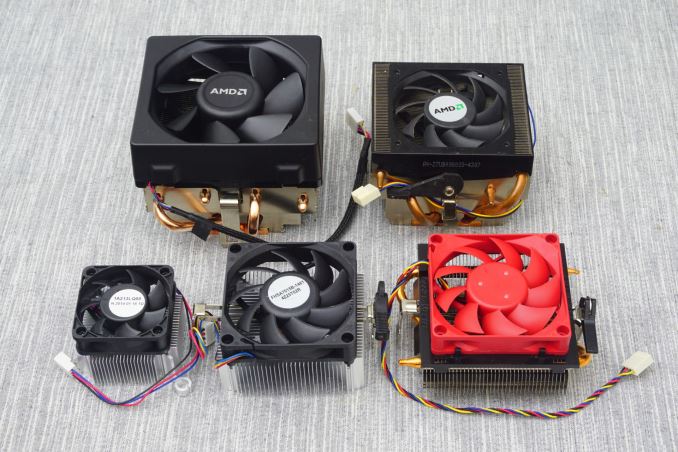
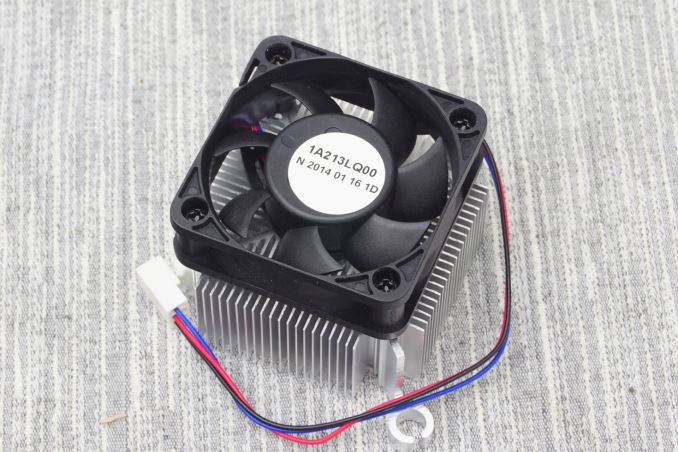
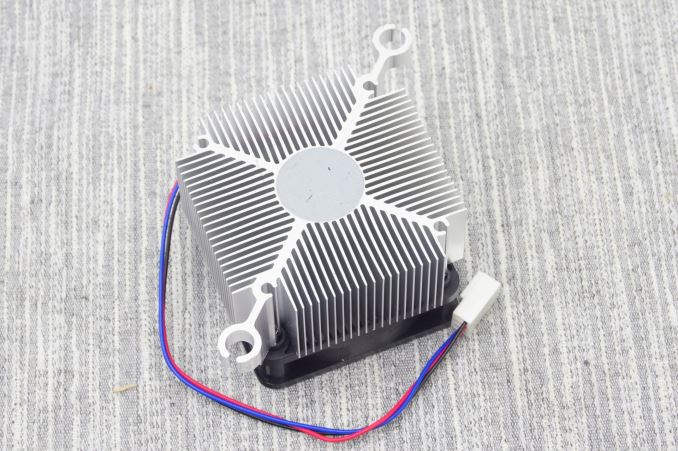
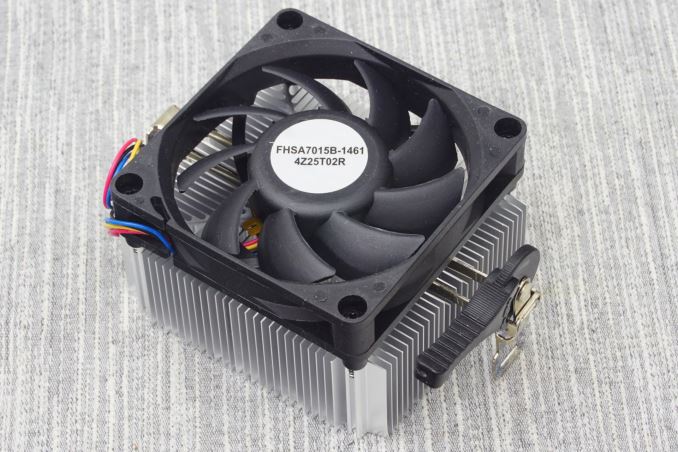
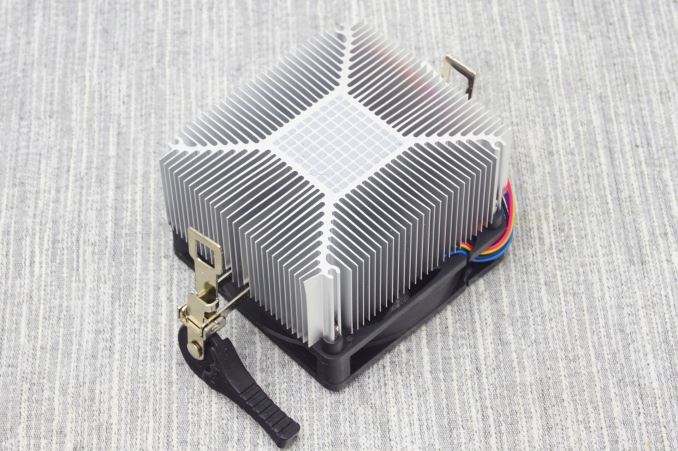
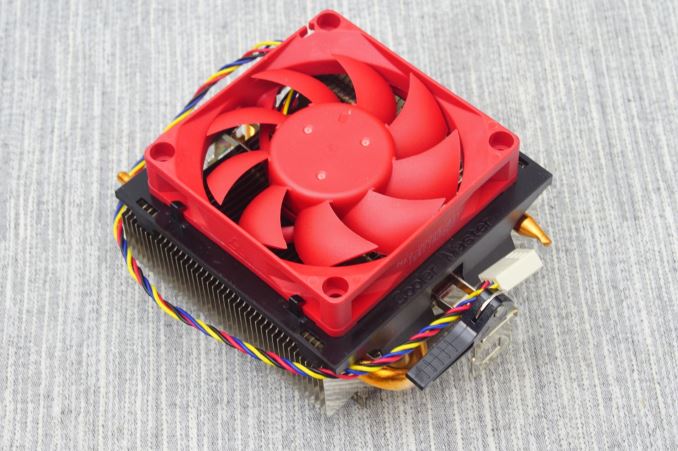
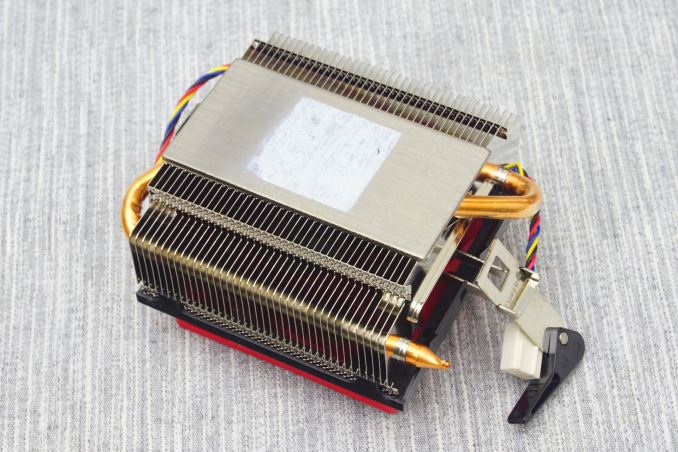
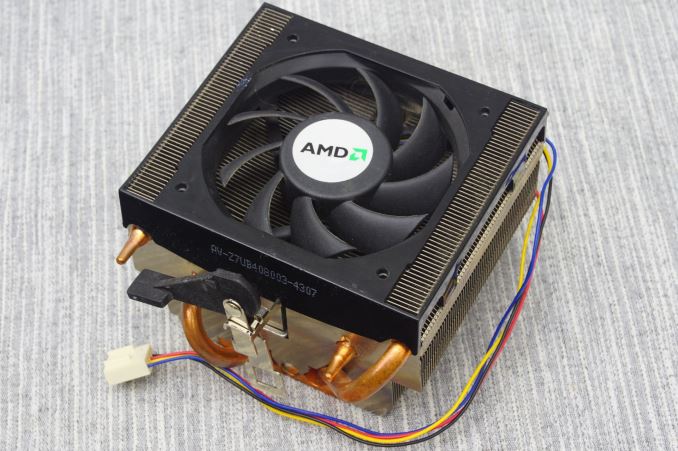
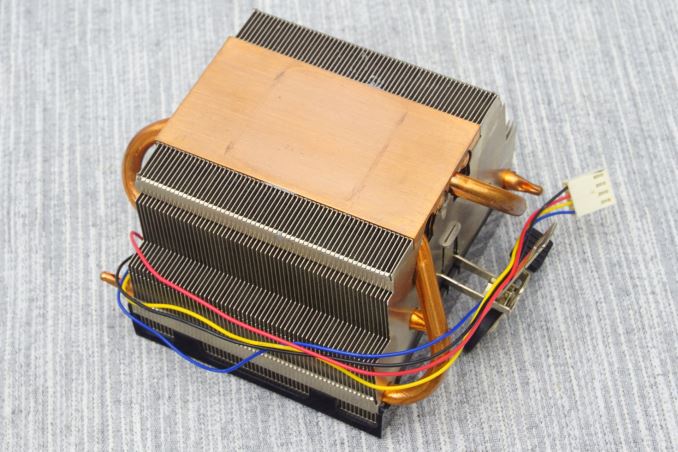

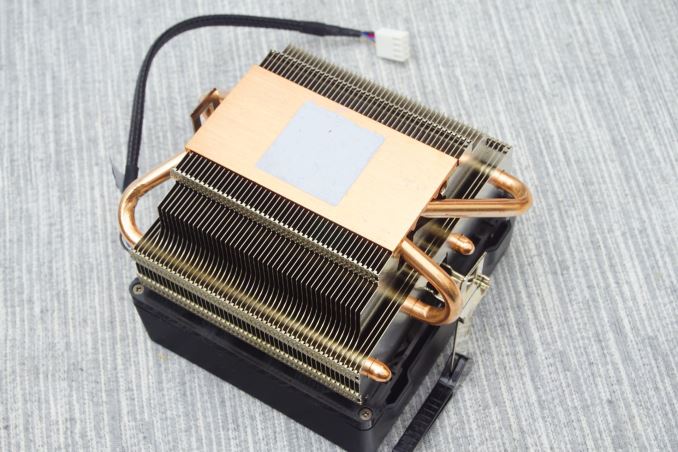








82 Comments
View All Comments
ZeDestructor - Monday, July 25, 2016 - link
Yes they could, but then you'd be reducing yields, which would drive final price up.pseudoid - Friday, July 22, 2016 - link
Did I miss the part about the SkyLake (LGA 1151) uPs? The Intel boxed Core I7-6700K Skylake uP comes with no cooling fan. I found that the Noctua coolers are a better fit for my needs, especially the iron-clad 3yr. warranty!LordanSS - Friday, July 22, 2016 - link
Thank you for this review.Although I already expected the 212 EVO to pull ahead (it's tough to match it on price/performance), was interesting to see the differences on the other stock ones. And the Wraith came out as a pleasant surprise.
Maybe in the US it's all about Intel and their CPUs, but in other areas of the world, like here in South America, AMD and their APUs are not doing poorly, with very good (local) pricing and decent enough performance for usual Office and light work cases, and people even use them for League of Legends and DotA2, which are very popular games around here, and not too graphics intensive.
zodiacfml - Friday, July 22, 2016 - link
I went to Intel's list of Skylake desktop CPU's and found only two that has around 90W of TDP.The 212 is only 25C above ambient at 150W.
Anything larger or more expensive than the 212 is pretty much overkill for modern CPUs.
wintermute000 - Friday, July 22, 2016 - link
"modern [Intel standard desktop] CPUs"FIFY
Ascaris - Sunday, July 24, 2016 - link
"modern [Intel standard desktop] CPUs at their stock clock and voltage settings"Byte - Saturday, July 23, 2016 - link
The hyper 212 is a bit overrated and dated, but then again i used it to test a bunch of 6700k i had fun delidding with liquid ultra and it kept them cool to 4.6/4.7GHz pretty easy.phylop - Saturday, July 23, 2016 - link
I would love to see you guys post an anthology of coolers throughout the ages. Include comparing how older coolers would perform on modern CPUs and vice versa.Teknobug - Saturday, July 23, 2016 - link
The 212 is probably the best bang per buck for HSF, can't go wrong with it. I also have a TX3 which is nearly as effective as the 212 and about $10 less, however there is one thing you must do if you're going to use it on an Intel system- ditch the flimsy black/white plastic locks and steal the ones from an Intel HSF to replace them with. Once you do that, you got a pretty solid HSF even for decently OC'd CPU's.Zap - Saturday, July 23, 2016 - link
IMO stock coolers are perfectly fine for systems that run stock speeds and aren't intended to sit running torture tests all day.Noisy? Did you enable "smart fan" in BIOS? Is that in normal use or hammering it with Prime95?
Bad temperatures? Did you install it properly? For whatever reason many people can't figure out push pins when they are super simple to use. Is your temperature "comfort level" calibrated for overclocks when you're just building a stock clocked system for family to use? Fact: Your stock clocked CPU does not require low temperatures.